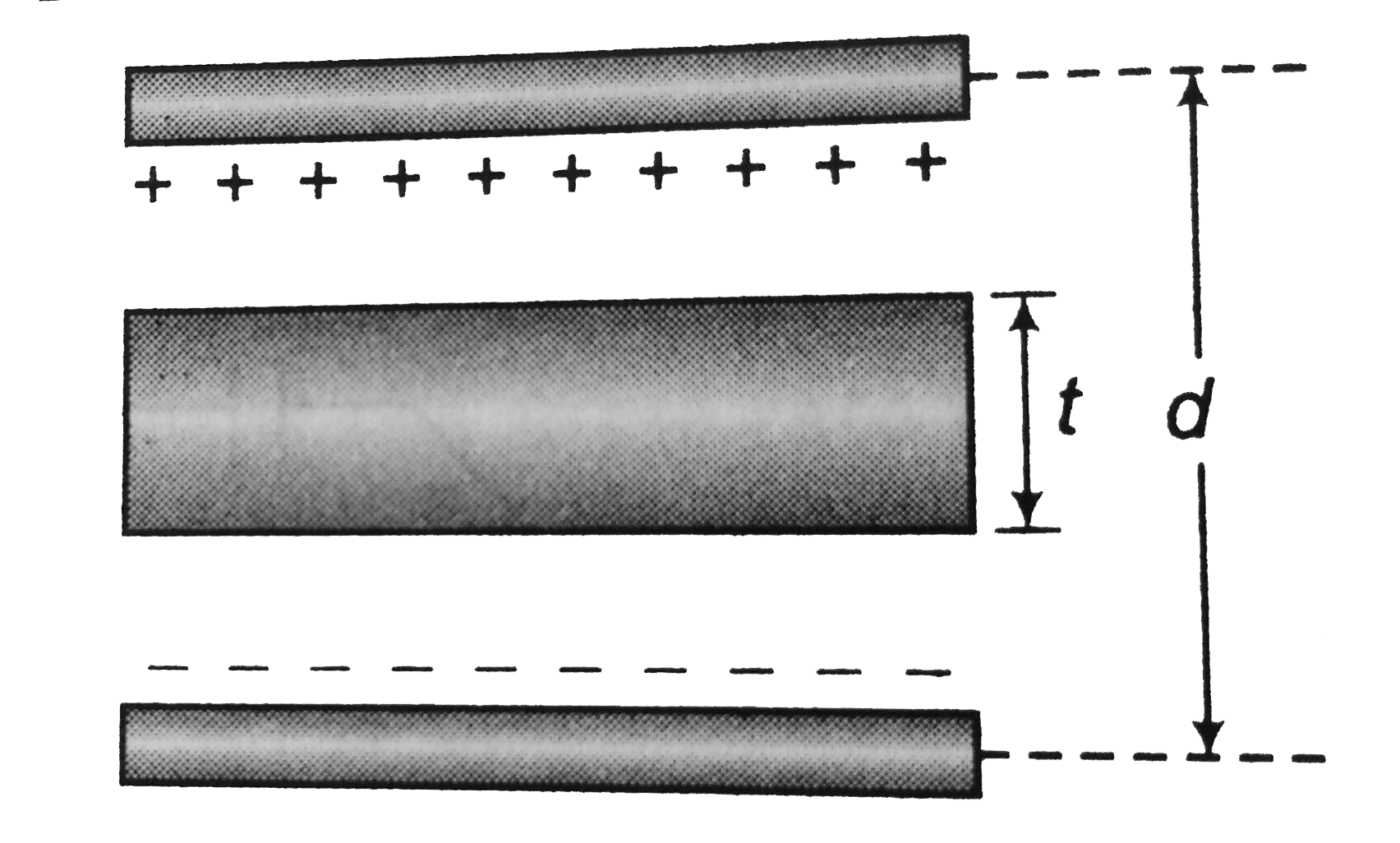A parallel plate capacitor having capacitance 12pF is charged bya battery to a potential difference of 10V between its plates. The charging battery is now disonnected and a porcelain slab of dielectric constant 6.5 is slipped between the plates. The work done by the capacitor on the slab is
692 pJ
508pJ
560pJ
600 pJ
Step by step video & image solution for A parallel plate capacitor having capacitance 12pF is charged bya battery to a potential difference of 10V between its plates. The charging battery is now disonnected and a porcelain slab of dielectric constant 6.5 is slipped between the plates. The work done by the capacitor on the slab is by Physics experts to help you in doubts & scoring excellent marks in Class 12 exams.
Updated on:21/07/2023Topper's Solved these Questions
Similar Questions
A parallel plate capacitor whose capacitance C is 13.5pF is charged by a battery to a potential difference V=12.5V between its plates. The charging battery is now disconnected, and a porcelain slab (k=6.50) is slipped between the plates.
(a) What is the potential energy of the capacitor before the slab is inserted?
(b) What is the potential energy of the capacitor slab device after the slab is inserted?
View SolutionA parallel - plate capacitor of plate area Aand plate separation d is charged to a potential difference V and then the battery is disconnected . A slab of dielectric constant K is then inserted between the plate of the capacitor so as to fill the space between the plate .Find the work done on the system in the process of inserting the slab.
View Solution
Knowledge Check
Figure shows a parallel plate capacitor with plate area A and plate separation d. A potential difference is being applied between the plates. The battery is then disconnected and a dielectric slab of dieletric constant K is placed in between the plates of the capacitor as shown.

The electric field in the gaps between the plates and the electric slab will beAε0AVdBVdCKVdDVd−tFigure shows a parallel plate capacitor with plate area A and plate separation d. A potential difference is being applied between the plates. The battery is then disconnected and a dielectric slab of dielectric constant K is placed in between the plates of the capacitor as shown.

The electric field in the dielectric slab isAVKdBKVdCVdDKVtA parallel plate capacitor of capacitance C0 is charged with a charge Q0 to a potential difference V0 and the battery is then disconnected Now a dielectric slab of dielectric constant k is inserted between the plates ofcapacitor. The dimensions of the slab are such that it completely fills the space between the plates, then :
ACharge on the' plates remains the sameBCharge on the plates decreases to Q0/KCCharge on _the plates increases to KQ0DPotential difference between plates remains the same
A capacitor having a capacitance of 100μf is changed to a potential difference of 50V.(a) What is the magnitude of the charge on each plate? (b)The charging battery is disconnected and a dielectric of dielectric constant 2.5 is inserted . Calculate the new potential difference between the plate .(c) What charge would have producted this potential difference in absence of the dielectric slab.(d) Find the charge induced at a surface of the dielectric slab.
View SolutionA dielectric slab is placed between the plates of a parallel plate capacitor. Its capacitance
View SolutionA parallel plate capacitor having capacitance C farad is connected with a battery of emf V volts. Keeping the capacitor cannected with the battery, a dielectric slab of dielectric constant K is inserted between the plates. The dimensions of the slab are such that it fills the space between the capacitor plates. Then,
View SolutionA capacitor plates are charged by a battery with ‘V’ volts. After charging battery is disconnected and a dielectric slab with dielectric constant ‘K’ is inserted between its plates, the potential across the plates of a capacitor will become
View SolutionA capacitor is charged by using a battery which is then disconnected. A dielectric slab is then slipped between the plates, which results in
View Solution
